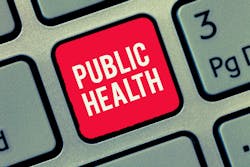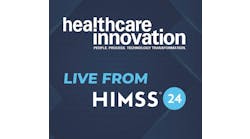The pandemic has highlighted the need for a large-scale investment in public health data infrastructure. After an extensive review, the Healthcare Information and Management Systems Society (HIMSS) has published a report recommending an investment of $36.7 billion over 10 years to modernize State, Territorial, Local and Tribal (STLT) public health infrastructure to ensure readiness for ongoing and emerging public health emergencies.
The $36.7 billion figure includes $25.6 billion for immediate STLT public health data infrastructure and $11 billion for public health interoperability and sustainability, according to the Public Health Information and Technology Infrastructure Modernization Funding Report.
“In 2010, the public health community was asked to wait its turn for a chance of modernization while hospitals and providers received more than $35 billion in direct funding,” said Tom Leary, senior vice president and head of government relations, in a statement. “The COVID-19 pandemic has demonstrated we can’t wait any longer. The $1 billion in funding that has been invested by Congress since March 2020 has many benefits. To truly ensure public health is an equal partner with the U.S. clinical environment, we need a responsible approach to investment in STLT public health infrastructure. Our report outlines the areas of investment that will bolster public health throughout the U.S. It will have immediate and long-term benefits for all STLT communities.”
The report notes that the CDC has launched a Data Modernization Initiative (DMI), a multi-year, billion-plus dollar effort to modernize core data and surveillance infrastructure across the federal and state public health landscape. It stated, however, that public health in the United States is inherently state and local and is often siloed and fragmented.
States, territories, local and tribal health agencies are the primary partners required to analyze health data and share insights with federal agencies, healthcare facilities, and health data exchanges throughout the United States, the report says. Their roles are essential for addressing existing or future health threats and supporting meaningful use. Therefore, the report argues that CDC’s DMI must include an agency-wide focus to improve HHS enterprise IT infrastructure at all levels. Modernization of public health data systems and services includes:
• Digitization across the public health infrastructure
• Standardization supporting greater interoperability across the spectrum of care
• Innovation supporting the transformation of STLTs to support meaningful use, preparedness, and health equity
HIMSS said the $36.7 billion investment recommended to digitize, modernize and interoperate STLT public health data infrastructure over the next 10 years would also develop the local public health informatics workforce and systems compatibility required to support the following public health functions and modernization priorities:
• Electronic case reporting and contact tracing
• Syndromic disease surveillance
• Nationwide notifiable disease surveillance
• Vital records reporting
• Electronic laboratory results reporting
• Immunization registry reporting and query
• Health IT innovations and workforce capacity
• Trusted and secure access to multi-modal health data
• Establish a nimble rapid cycle learning health system
• Interoperable platforms to facilitate broad-based data exchange
• Ongoing licensing costs, software updates, hardware updates
The report notes that comprehensive cross-agency strategies should be employed to address current Band-Aids across agencies taking a siloed approach to modernization of services. “This means that STLTs will need to realize an enterprise strategy considering both the hardware and software functionality than the staffing expertise to leverage these modern data solutions and approaches, keeping in mind the legal requirements of the state and federal guidelines.”
“Local-to-global communities can benefit immensely from modernization, especially during public health crises and in preparing for future crises,” said Valerie Rogers, director of government relations for HIMSS, in a statement accompanying the report’s release. “The proposed 10-year, $36.7 billion investment to strengthen our public health information infrastructure ensures our ability to produce more meaningful data yielded by secure, interoperable, integrated systems supporting public health officials, healthcare agencies and policymakers in making informed decisions to rapidly respond to health threats arising from resistant infectious diseases as well as the impacts from global climate shifts and natural disasters. These investments also support our national Healthy People 2030 goals to address health inequalities and persistent chronic conditions.”


